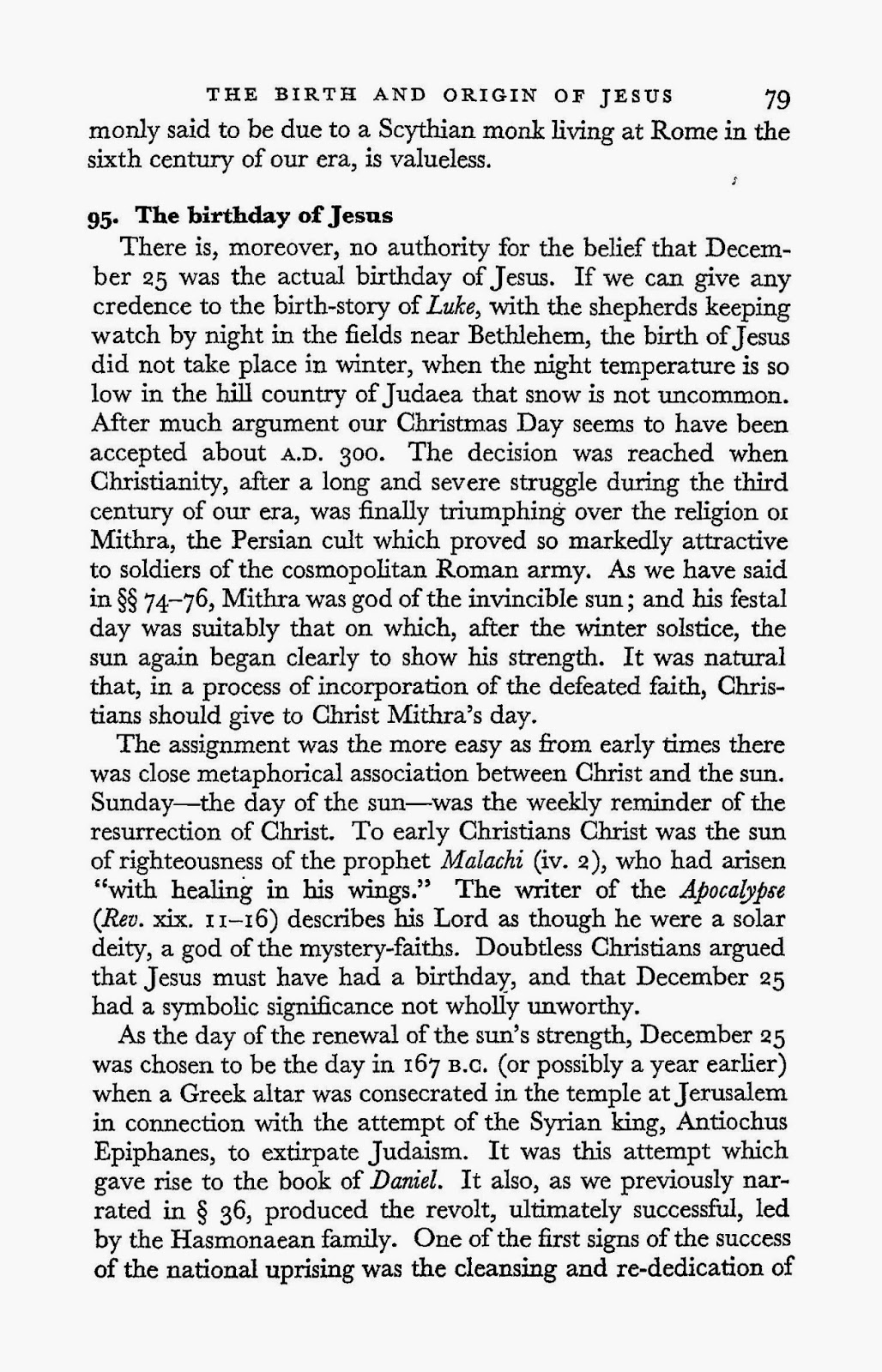Download These Images in .jpeg HERE
According to Quran Jesus Christ was not born in December

According to this verse the birth of Jesus took place at a time when fresh dates are found on palm trees in Judaea.That season evidently is in the month of August-September , but according to this view generally held by Christians , Jesus was born on 25th December which date is celebrated all over the Christian World every year with great fervour. Now this Christian View is contradicted not only by the Quran but also by History and even by the new Testament itself.


وَهُزِّيْٓ اِلَيْكِ بِجِذْعِ النَّخْلَةِ تُسٰقِطْ عَلَيْكِ رُطَبًا جَنِيًّا
“And Shake towards thyself the trunk of palm tree ; it will drop upon thee fresh ripe dates(19:26)
According to this verse the birth of Jesus took place at a time when fresh dates are found on palm trees in Judaea.That season evidently is in the month of August-September , but according to this view generally held by Christians , Jesus was born on 25th December which date is celebrated all over the Christian World every year with great fervour. Now this Christian View is contradicted not only by the Quran but also by History and even by the new Testament itself.
Writing about the Jesus’s Birth Luke says :
”And there was Shepherds in the same country (Judaea) abiding in the field , and keeping watch by night over their flocks ”(Luke 2:7,8)
Commenting on this statement of Luke , Bishop Barns in his famous book :”The Rise of Christianity” on page 79 says:

“There is moreover no authority for the beleif that December 25 was the actuall birthday of Jesus. If we can give any credence to the birth-story of Luke , with the shepherds keeping watching by night in the field near Bethlehem the birth of Jesus did not take place in winter when the night temprature is too low in the hill country of judaea that snow is not uncommon.. After much argument our Christmas day seems to have been accepted about A.D 300.
The statement of Encyclopedia Britanicca under of the word “Christmas” is :
“The precise origin of assigning December 25 as the birth date of Jesus is unclear. The New Testament provides no clues in this regard.”
And that is the view which is expressed by the Quran .In fact the whole trouble of fixing the date of Jesus’s birth seems to have arisen from a confusion of the date of Mary’s conception. The peregency of Mary seemed to have taken place sometime in November or December and not in March or April as the Church historians believe.When after four or five months conception pregency become too obvious to be conceal any longer , Joseph was prevailed upon to take Mary to his house in the month of March or April of the next Year . Thus Christians historians mistake the date when Joseph took Mary to his house—in the month pf March or April– for the date of her conception which had taken place four or five months earlier.
It also appear from the present Verse that Mary was lying in sheltered place in the upper part of the hill and date palm was standing in the slope , and there she sould easily reach to its trunk and shake it.The fact of Mary having been guided to a fountain , as mentioned in the proceeding verse , in order to drink of it’s water and wash herself , point to Jesus birth having taking place in the month of August -September because in the icy cold weather of Judaea in December Mary could not have washed herself in the open…
There are a lot of celebrations taking place all over the world on this day known as December 25th, but none of them are celebrating the birth of YAHSHUA our MESSIYAH!




Comments
Post a Comment